











Bonne Chance
Ça y est, on s'amuse?
Bonne Chance
Ça y est, on s'amuse?
“Bonne Chance” is an innovative approach to language learning in the form of a French language immersion game.
Learning languages through or with gaming is not new in and of itself. What makes the “Bonne Chance” project unique is that we are trying to teach French through designing a game instead of simply playing it. This computer-based game was collaboratively created by a team of undergraduate and graduate students, lecturers, and professors from two colleges and seven departments at the University of Tennessee. Through an interdisciplinary approach to modern software development, students from multiple academic backgrounds with varying experience levels are able to work together in a cross-functional community. Language and culture immersion are being explored in a new technological and educational realm by applying game-based learning mechanics to an elementary French language curriculum.
Game Play
In the game, the learner plays as a traveler going to Paris, who is then faced with an epic quest. The game progresses through a series of problem-solving language puzzles and form-focused, language-practice mini-games that connect to French culture. By solving the enigmas, players are able to practice language skills in a rich, culturally authentic context.

Le Louvre 3015
Le Louvre 3015
The Place
Welcome to the Louvre! The year is 3015.
The Character
You are about to meet Sébastien, the head of the French DGSE who assigns you a mission to travel back in time to replace documents that have been stolen and haphazardly scattered throughout history by a maniacal time thief! It is up you to ensure that these documents return to their rightful time, and in order to do this, you must employ the use of a time travel device. But not so fast! This device only functions off of the use of French grammar (I hope you studied)!
The Artifact
Once you have mastered the French grammar necessary to make the time device functional, you must return to the Notre Dame Cathedral in the year 1415 in order to return a document, Le Ditié de Jean D’Arc, back to its rightful time. This document presents the emblematic historical figure Joan of Arc through the lyrical prose of France’s first influential woman writer, Christine de Pizan. Hurry and return the document before French history is irrevocably changed!

The Language Game | Gendered Nouns (conjugation)
The motivational aspect of playing -- and beating -- the game can incite players to "do more" French. Even when practicing forms as arbitrary and conventional as the gender of nouns.

Notre Dame 1415
Notre Dame 1415
The Place
Discover the Cathedral de Notre Dame in all of its medieval glory! Now that you have returned Christine de Pizan’s text to its rightful place and time, you must check to see if there is another time anomaly.
The Character
Have a chat with the Notre Dame priest, or the Hunchback Quasimodo, to see if anything seems out of place (but be careful not to catch the plague!).
The Artifact
Wait..is that the Molière’s play, La Malade Imaginaire, that the priest is reading?! Molière is one of France’s most famous renaissance playwrights and is well known for his satirical social commentary — but he won’t be alive for another 200 years! It looks like you’ve found another document that you have to return to its time period! Get your powdered wig ready, it’s time to head to the Renaissance!
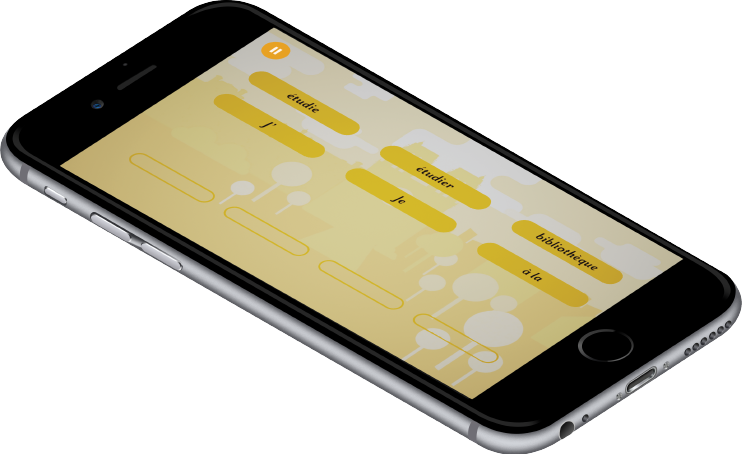
The Language Game | Sentence structure (conjugation)
In this sentence building game, players have to dissect the language on a more granular level, in this case syntax, while tending to both form and meaning.

Jardin du Luxembourg 1630
Jardin du Luxembourg 1630
The Place
Take a stroll in the Gardens of Luxembourg! These beautiful gardens were built by Jacques Boyceau, who you’ll have a chance to meet during your visit to the Renaissance.
The Character
Don’t forget to say hello to Marie de Medici — the gardens were built for her after all.
The Artifact
While you’re chatting it up with these historic figures, you might want to make sure they aren’t exposed to any documents that shouldn’t belong in this level, such as the Napoleonic Code! This document was created in the 1800s by Napoleon Bonaparte as a foundation for French law in the aftermath of the French Revolution. You better make sure Marie de Medici doesn’t get her hands on it, I’m sure she wouldn’t support a complete overthrow of the French monarchy! Hurry to find it so that you can return it to its rightful place in history!
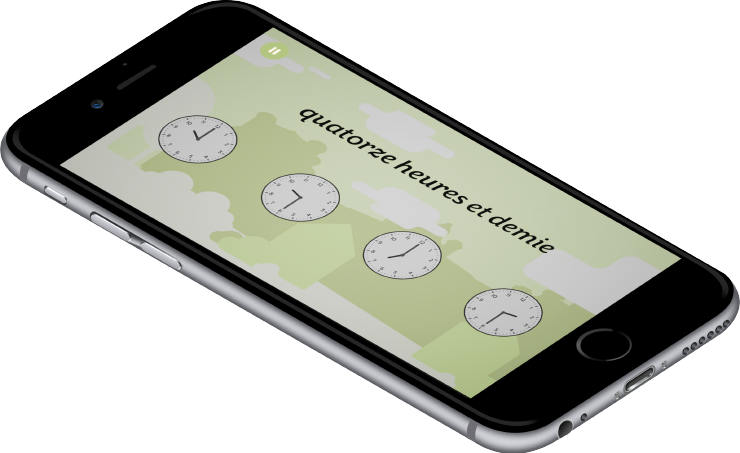
The Language Game | Clocks
The time game uses the "multiple-choice" structure where players have to select the correct clock based off of the time that they hear. This game features both the 12 hour and 24 hour clock, which French people use, adding an important cultural element to simple game mechanics.

Père Lachaise 1800
Père Lachaise 1800
The Place
You dodged a bullet (or a guillotine) by returning the Napoleonic code before changing the course of the French revolution! You’ve traveled to Père Lachaise cemetery during the 1800s.
The Character
A groundskeeper of the cemetery.
The Artifact
A groundskeeper of the cemetery has found something a bit out of place — a flyer for the first world’s fair in 1889. I bet he’s wondering what a giant chandelier-shaped monument is doing in the middle of the Champs de Mars! This must be another time anomaly, and perhaps an indicator of where that pesky time thief has been trying to go all along — wasn’t there a giant diamond displayed in the Eiffel tower at the first world’s fair? You better get your time travel device set for the day of the first World’s Fair to make sure that she doesn’t try to steal it!
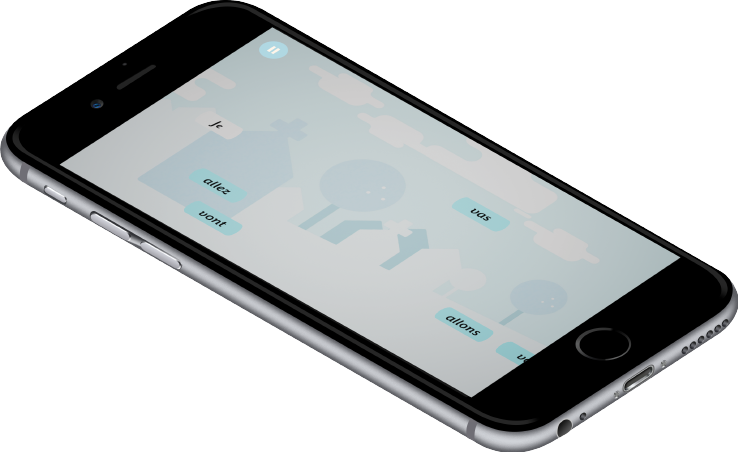
The Language Game | Clocks
Verb agreement is an important part of learning to communicate in a new language. It is our hope that over time, as often happens with online games, users will create a gaming community that will establish a meta-discourse and strategies about the game, thus helping each other learn.

Tour Eiffel 1889
Tour Eiffel 1889
The Place
Ah, the Eiffel Tower. What a better time to visit this historic Parisian monument than at its 1889 debut at the first ever World’s Fair!
The Character
You can learn more about the inspiration behind the tower from its architect Gustave Eiffel, who will certainly be at the great reveal. Many notable French figures will take part in this historic event, including the acclaimed painter Vincent Van Gogh — although he may have some trouble hearing you so you better speak to him loudly!
The Artifact
While you enjoy the day conversing with these famous historic figures, Gustave Eiffel notices someone climbing the Eiffel tower to get to the imperial diamond that is on display. It’s the time thief! You must hurry to catch her before she steals the diamond and changes history forever!
+ The Language Game | Phrase Structure (adjective/noun agreement)
The phrase-structure game builds off of the earlier sentence structure game, but it is dealing with more complex language structures, such as: the placement and agreement of adjectives. This helps players recognize and use low-scope patterns, which are self-contained chunks of language, that help users work their way up to more extended discourse.
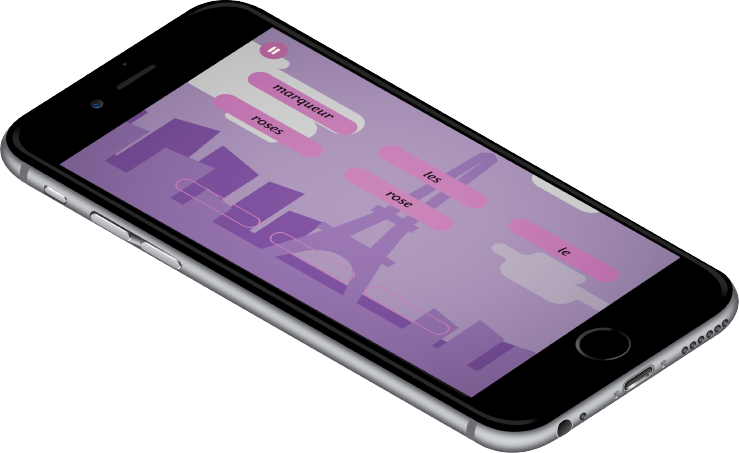

La Prison 1968
La Prison 1968
The Place
It looks like you stopped the time thief — but in the debacle, your time travel device malfunctioned and now you can’t control what times periods you are traveling to! You need to pay attention to your surroundings in order to figure out where and when you are. From the looks of things, you seem to be in a jail. Your cellmate keeps rambling about tuition costs and you notice a poster on the ground — from Mai ’68. Ah ha! You must have fallen into 1968 during the student protests and gotten mistaken for a rioter!
The Character
The Rioter and the Police Officer
The Artifact
These protest posters were very common during this time period, and the act of protesting is an integral part of French history and culture. There is something else in your cell — is that?! The Treaty of Versailles from WWI?! There must be more time anomalies happening, you need to try to return to treaty to its proper time and place. You may be able to get your time travel device working again through some French grammar practice — but try not to make any mistakes! You wouldn’t want to land in jail again, especially during WWI.
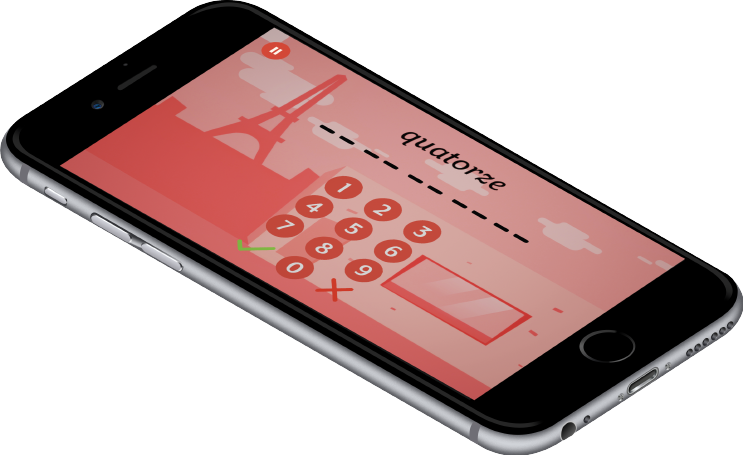
The Language Game | Numbers
Learning numbers allows the player to unlock their cell and return to the game.

Versailles 1919
Versailles 1919
The Place
You made it to Versailles! Feel free to wander around the hall of mirrors, but don’t forget to return the treaty to Clemenceau, I’m sure he is worried about where it has gone. After all, this important document marked the end of the state of war between Germany and the Allied powers in 1919. After you return the document, feel free to explore the chateau!
The Character
Georges Clemenceau was the statesmen who led the nation during the First World War. He was the Prime Minister twice, 1906-09 and 1917-1920. Leader of the Radical Party and nicknamed "Le Tigre," he was in favor of total victory over the German Empire.
The Artifact
While you’re exploring Versailles, you may want to make sure that nothing is out of place, such as that newspaper article from 1989! You better go check it out and make sure no one else sees it before you can put it back where it belongs.
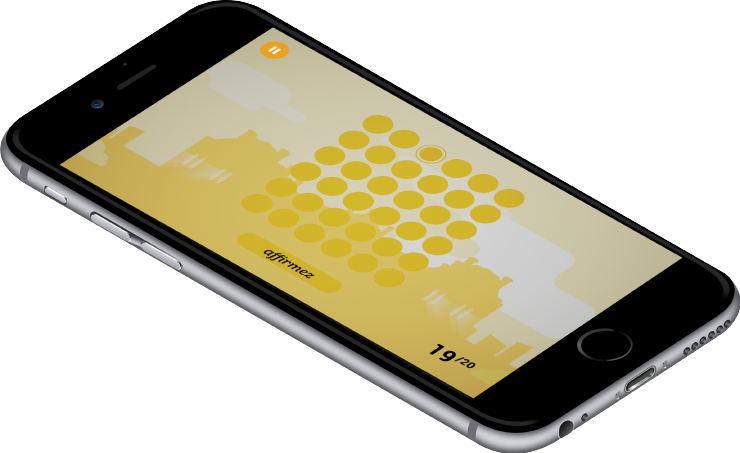
The Language Game | Passé Composé
avoir .. to make
This game helps users practice agreement.

Le Louvre 1984
Le Louvre 1984
The Place
It turns out the newspaper article you found at Versailles was discussing the reveal of the pyramid du louvre in 1989. Commissioned by President François Mitterand, the Louvre pyramid stirred up some controversy in France during the 1980s. Many Parisians considered the pyramid to be an eyesore — a clash of style that defaced the royal court on which the Louvre is built.
The Character
Just go talk to that art critic about how he feels about the pyramid!
The Artifact
While you’re at it, make sure you keep an eye out for any time anomalies. That Toulouse-Lautrec poster stands out a bit. Go check it out and see where it leads you!

The Language Game | Food
Everyone has got to eat. Players explore the unique combinations of food, familiar and exotic, that one would encounter while trying to eat in France.

Moulin Rouge 1921
Moulin Rouge 1921
The Place
What is more Parisian than the Moulin Rouge in the 1920s? This is the Golden Age of Paris, and Henri de Toulause-Laturec is a famous artist known for his poster advertisements like the one you found for the Moulin Rouge.
The Character
During your visit to this thriving time in French culture, go chat with Mistinguett, the famous French singer and actress who performed at the Moulin Rouge and just so happens to be the highest paid female performer of her time!
The Artifact
While you discuss art and music with this flamboyant entertainer, you notice something out of place — a diary from WWII! This diary won’t be written for another 20 years; you better return it to its time period before someone gains an unexpected foreshadow of the times to come.
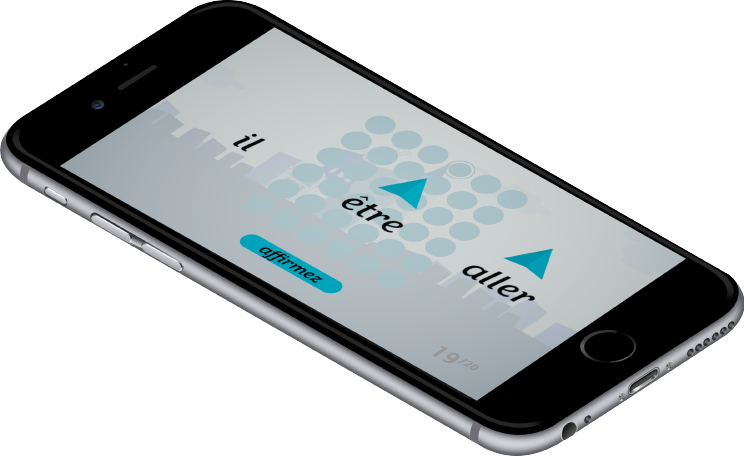
The Language Game | Passé composé (être)
étre .. to be

Notre Dame 1940
Notre Dame 1940
The Place
WWII France is probably not your typical time travel dream vacation — but you’re not vacationing! You are here on a mission to return this WWII soldier’s diary to its rightful place.
The Character
The soldier who wrote this diary is in charge of guarding the Notre Dame cathedral. A soldier of African descent, he represents the many soldiers that were recruited from French territories in Africa and the Caribbean to serve in the Second World War. His diary is breathtakingly revealing of the terrors of war from an outsider’s perspective. Feel free to have a chat with him about his war — time experience! Don’t stay too long though, you need to make it back to your own time before you get drafted into the French army!

The Language Game | Sentence Structure (direct object pronouns)
Texting in French? Now you can. This game is designed to blend all of your language practice with contemporary culture and vernacular.



































